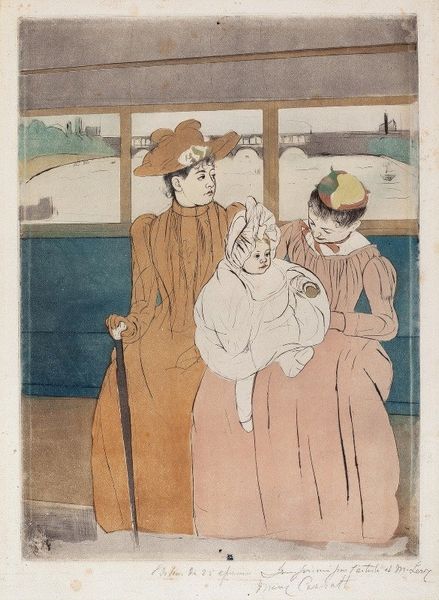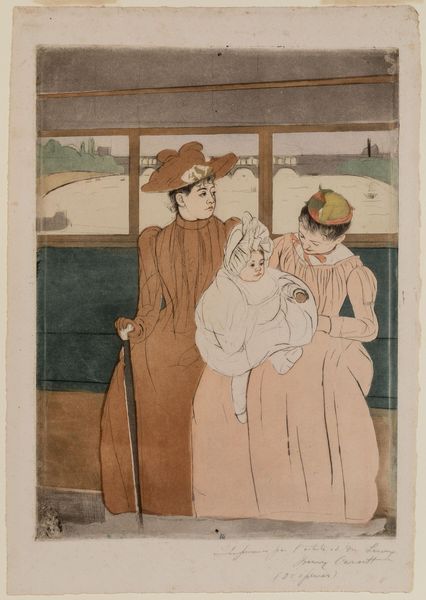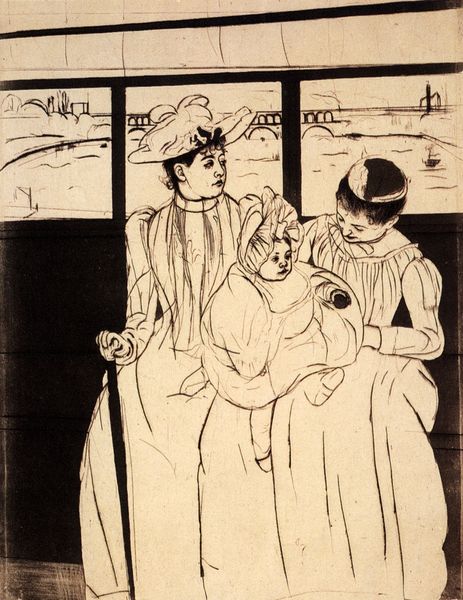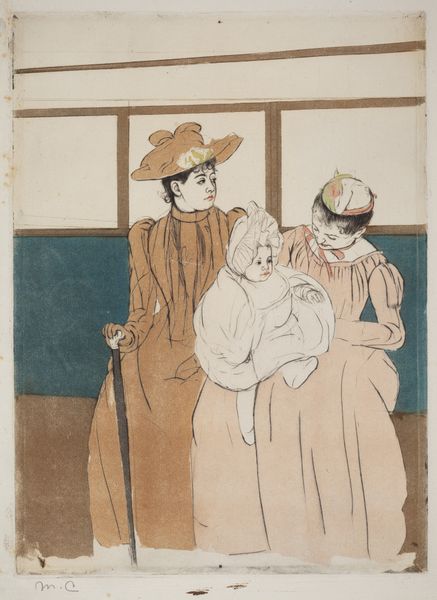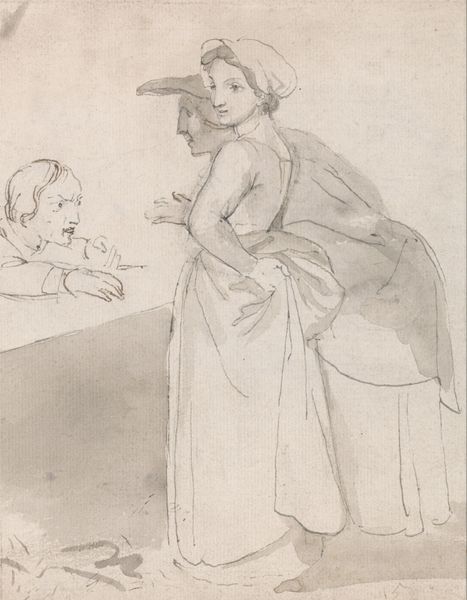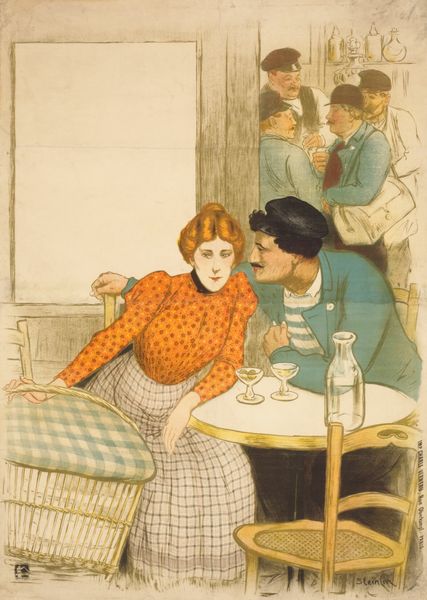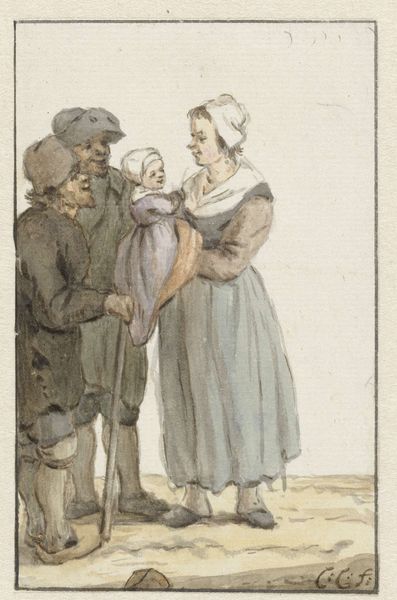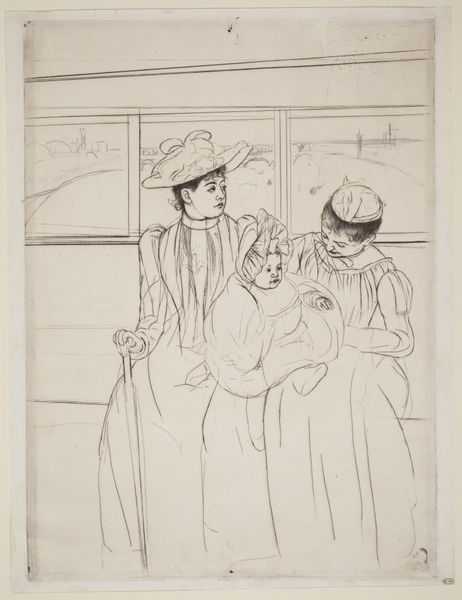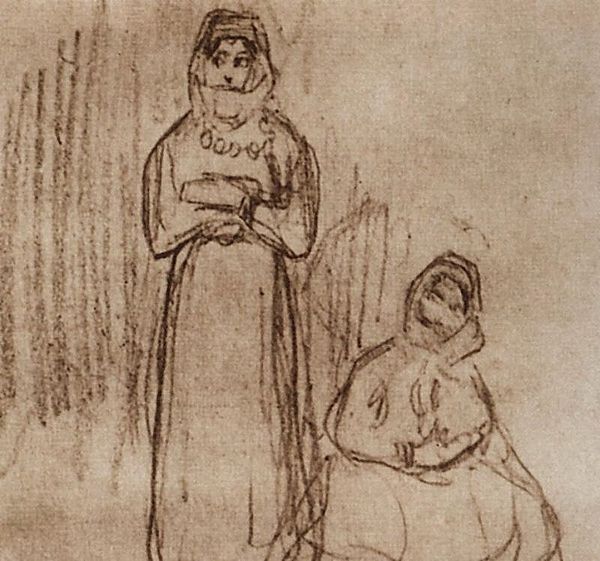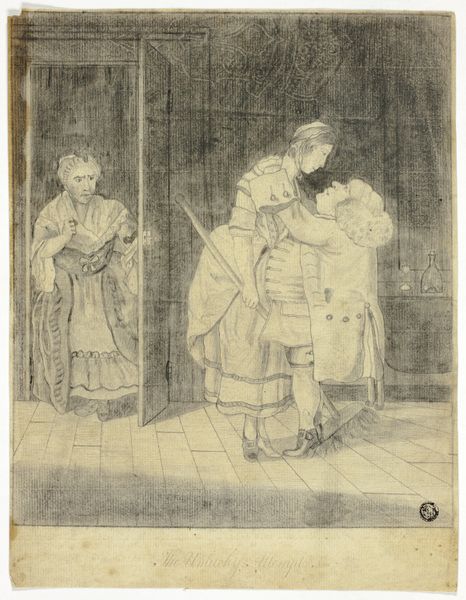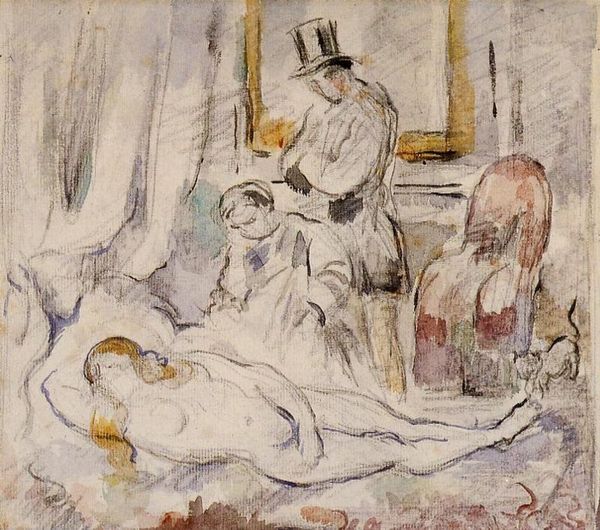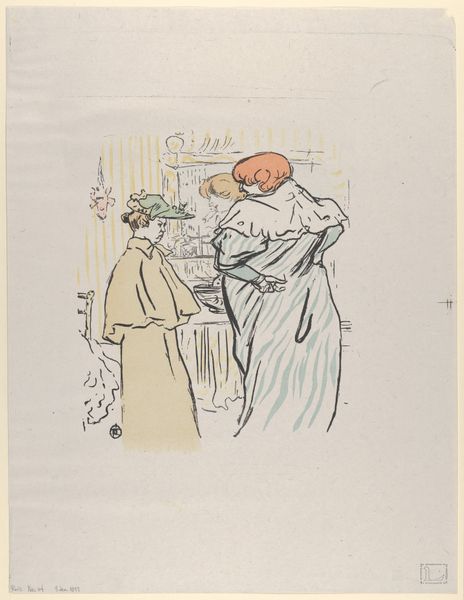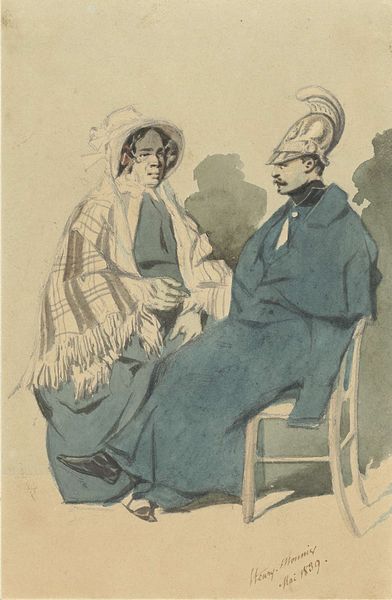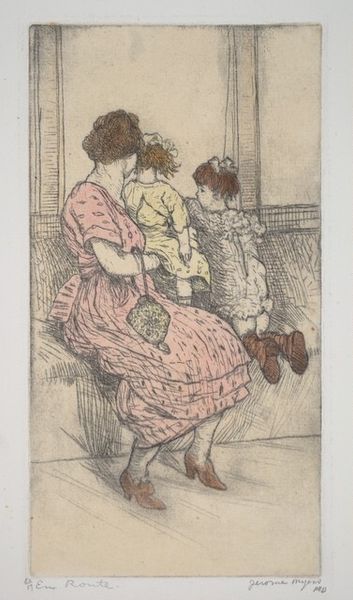
Copyright: Public domain
Editor: Mary Cassatt's watercolor, "Interior of a Tramway Passing a Bridge," painted in 1891, offers such an intimate glimpse into a Parisian tramway. There’s a stillness to it, almost like a captured breath, wouldn't you say? What jumps out at you when you look at this work? Curator: It's a fantastic example of Cassatt engaging with the burgeoning modern world. The image showcases not only a novel mode of transportation, but also new levels of access for women within an increasingly public sphere. Consider how unusual it was for a woman to move about a city unaccompanied in prior eras, and think of this work as being related to gender, class and urbanization. Who has access to public transit? Whose stories are validated in fine art? And note the vantage point, from within: what does it tell us? Editor: That makes sense. So it's less about the people themselves and more about their access to society? Curator: Not quite, the figures are paramount. But note the shift. Women weren't just subjects for domestic interiors anymore. They were active participants in modern life, observers, commuters. Think about the implications: Does art give rise to cultural change, or reflect shifts that are already happening? Also, observe the composition and setting of the scene in contrast with its emotional content. Editor: The composition... I guess it feels like it's capturing a fleeting moment rather than making some grand statement? Curator: Exactly. Cassatt is capturing modern life and using a supposedly "feminine" medium – watercolor – to do so. This challenges traditional hierarchies of both subject matter and artistic technique. Think about how this might subvert established power structures. Editor: It's really fascinating to think about how a seemingly simple watercolor could have so many layers of meaning embedded within it. I'll never look at Impressionism the same way again! Curator: Precisely. Cassatt’s brilliance lies in using these "simple" moments to address larger cultural conversations about women's roles, public space, and the democratization of modern life. I find that perspective helpful in reading this kind of piece.
Comments
No comments
Be the first to comment and join the conversation on the ultimate creative platform.
